KAILUA-KONA — Kealakehe Regional Park is going to happen, according to Walter Kunitake, chairman of the West Hawaii Parks and Athletic Corporation.
“The picture looks bright at this point,” said Kunitake, 74, whose own mother, Kiyono Kunitake, was among the initial pushers for a Kealakehe recreational oasis back in the mid-1970s.
On Nov. 20, a shrunken County Council will take up a final reading of Bill 202 to transfer $162,000 in fair share contribution monies that are needed to fund the next steps in bringing to fruition the 190-acre park situated between Queen Kaahumanu and Ane Keohokalole highways and Kealakehe Parkway in Kailua-Kona.
With the additional funds, which will be added to $470,300 previously allocated, the county will move forward with an environmental assessment and preliminary engineering report for the project. Also funded will be updating an already approved master plan and preparing plans for 30 acres of on- and off-site critical habitat area per an agreement with the U.S. Fish and Wildlife Service.
“All in all, it seems like a really positive forward movement on the future vision for this area,” said Kona Councilwoman Karen Eoff.
The likelihood for passage
Normally a nine-member body, the council is down to seven members as Kona Councilman Dru Kanuha is off the council following the Nov. 6 election and Puna Councilwoman Jen Ruggles is not participating in council meetings or legislation.
Though the body is down two members, a two-thirds vote of the entire membership — or six yes votes — is still required to pass the budget amendment per county code. It also needs Mayor Harry Kim’s signature.
“I feel confident that the council will be supportive,” said Eoff. “The council will probably see that this a necessary step forward.”
The council earlier this month voted 6-0, with Kohala Councilman Tim Richards, Hilo Councilwoman Sue Lee Loy and Ruggles absent, to move Bill 202 to its final reading. The legislation sailed through a Finance Committee hearing in October, passing 8-0 with Ruggles absent.
The push from nearby projects
There’s also a push to get the park’s EA rolling as an EA for another important project, Village 9, a temporary homeless camp that’ll eventually be developed into a long-term housing site replete with social services, is “piggybacking” on the park’s consulting contract, but separately funded.
“There’s an impetus right now to get this EA and the PER going so the timing is important,” said Eoff.
Another thrust comes from the need for a portion of the park to be ready in time for the completion of Kealakehe Wastewater Treatment Plant R-1 upgrade in 2020, Eoff said.
Included in the park plans are basins to be constructed by the Department of Environmental Management for a soil aquifer treatment system on 12 acres near Queen Kaahumanu Highway to allow for discharge of excess treated R-1 water. The water will also be used to irrigate the park.
“Those two things kind of need to be going simultaneously,” said Eoff. “The Kealakehe Regional Park needs to be started so that there’s at least some grassy fields and ponds ready.”
It’s unclear how long the environmental study is expected to take or when work on the phased park project could commence because the Department of Parks and Recreation did not respond to numerous requests over a two-week period for comment on that and other details about the project.
The finances
No funding for the park’s construction is currently included in the 2018-19 capital improvement project budget. But, money has been allocated in past CIP budgets, including $1.5 million re-appropriated in 2016. Funding for the project’s also been included in prior bond requests.
The cost to fully construct the Kealakehe Regional Park was estimated in 2013 to cost $89 million, according to a master plan completed that year. Based on 2018 dollars, according to the Bureau of Labor Statistics, the price tag’s now $96.1 million.
Though a hefty price tag at full build out, the park’s been planned to be built in four phases. The first phase, estimated to cost $27.8 million in 2013, would include, covered basketball courts and a tennis complex, and related amenities like paths, roads, parking, landscaping and engineering.
Future phases include a soccer complex and football/rugby/soccer stadium; a baseball complex; and a great lawn, amphitheater, park administration structures, holua, driving range, dog park, archery range and community gardens.
Though the current fire to bring the park to fruition was lit in 2009, bringing a regional park to the North Kona area has been in the works for decades.
The county has tried, unsuccessfully, to build the park for decades, according to studies and newspaper articles dating back to 1976. In 1982, former Parks and Recreation Director Milton Hakoda declared the project “all but dead,” a West Hawaii Today article said.
In 1985, according to the planners, the land was proposed for a Kealakehe Sports Complex with a gym, pool, tennis courts, concert hall, soccer field and scores of other amenities. By 1990, the land was proposed as an 18-hole public golf course and effluent disposal area. Neither was implemented on the state land provided by executive order to the county for a golf course and effluent disposal area.
Years went by with little mention of the park, except for the occasional joke of the petroglyph swinging a golf club into the lava field.
That is until 2009, when the county held a three-day charrette to plan Kailua Park, also known as Old Kona Airport Park. Kailua Park is the primary recreational facility serving the West Hawaii area and it is heavily utilized year-round by schools, sports leagues and clubs, and park programs, in addition to casual use.
It was during those gatherings that the regional park came back up as it was realized that all of the wants and desires for Kailua Park would not fit there, without encroaching on the park’s passive nature, beach and open spaces, said Bo Kahui, president of the West Hawaii Parks and Athletic Corporation (WHIPAC) and executive director for Lai Opua 2020.
“And that was the beginning,” said Kunitake.
Lai Opua and WHIPAC subsequently got former Gov. Neil Abercrombie to change in 2011 the executive order over the land allowing the county to use it for recreation. In 2012, the county paid Kimura $277,000 to develop the park’s master plan.
However, roadblocks started to pop up not long after. First with the Department of the Interior Fish and Wildlife Service proposing in late 2012 to list 18,000 acres between Palani Road and Waikoloa as critical habitat. Approximately 150 of the 190 acres of Kealakehe Regional Park was included in the critical habitat area as proposed.
That was followed by a petition by the National Park Service in 2013 to designate the Keauhou Aquifer system a state groundwater management area.
An agreement regarding the park’s critical habitat was eventually forged in 2016 allowing the project to go forth. The funding in Bill 202 will help the county develop plans for meeting the agreement it signed with the feds.
The state Commission on Water Resource Management ultimately denied the park service petition in February 2017.
Later that year, Kahui said, WHIPAC pushed for the park’s funding, and by March of this year, the project was being discussed by the County Council amid talk of Village 9 to address the homeless situation in the area.
But again, the park would encounter a bump in the road, this time caused by natural disasters. First in May with the eruption of Kilauea’s Volcano’s lower East Rift Zone that decimated areas of Puna followed by two storms that drenched areas of East Hawaii resulting in flooding and damage.
“That took a toll on the project,” admitted Kahui, “but we had to be mindful of all those others that needed help, particularly those that live in Puna that were affected by the lava flow and those who were affected by the storms.”
Like a broken record, the push for funding for the EA and associated work picked up again. In September, a request for council action was submitted, and Bill 202 was introduced and being heard by the Finance Committee the next month.
“As we see the growth in Kona and the need, especially tied to the wastewater treatment plant, for the park, I’m just really encouraged to see this money coming through right now for the EA and PER,” said Eoff, noting that the Department of Parks and Recreation is already seeking a consultant for the work.









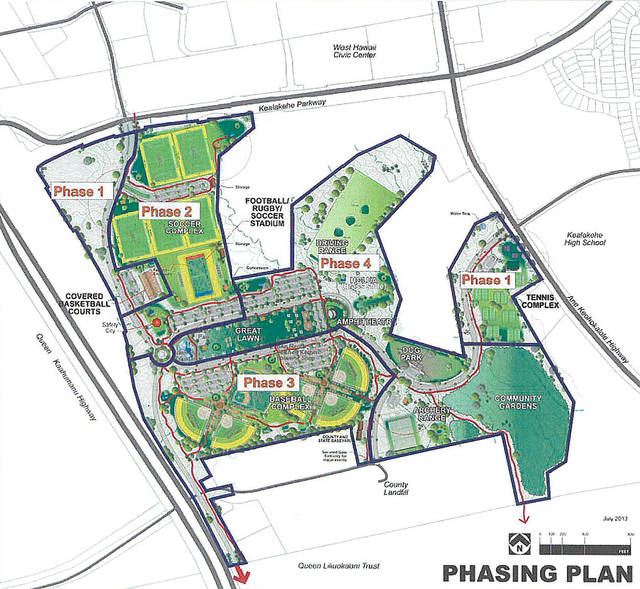

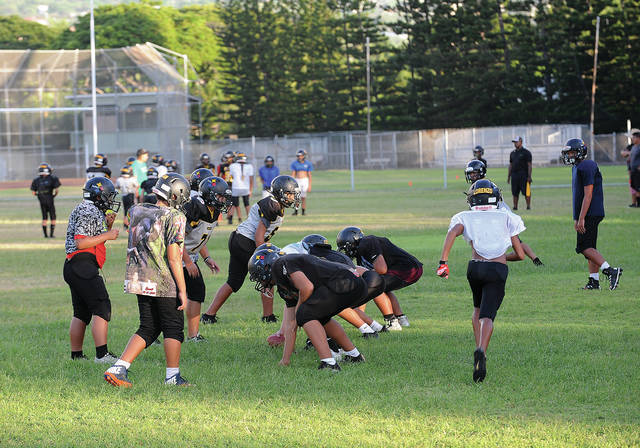
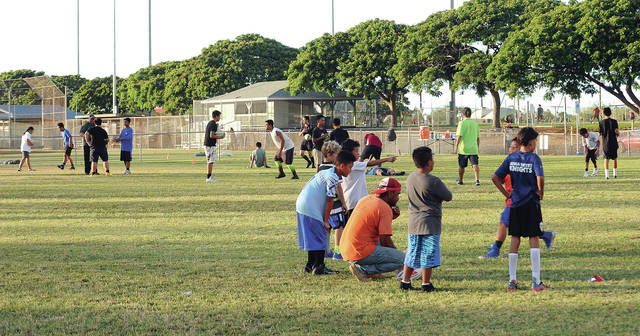
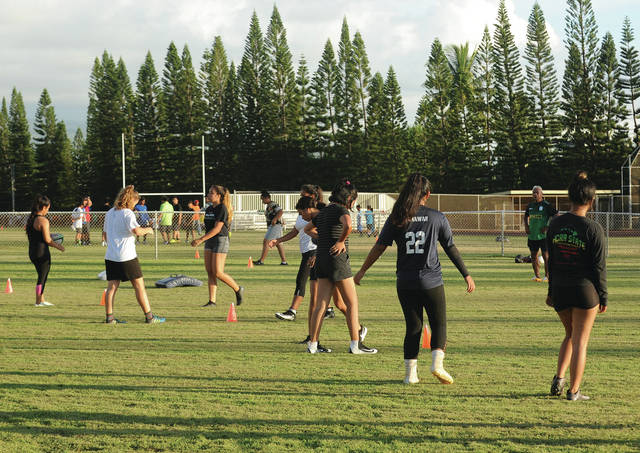
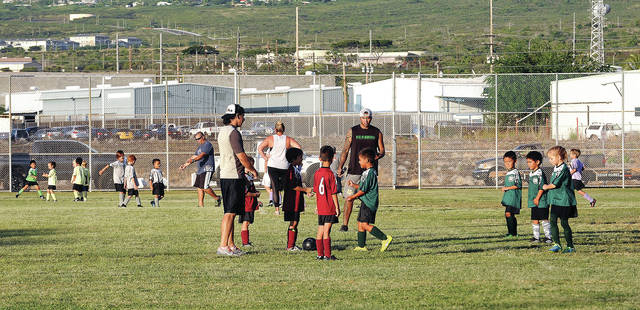
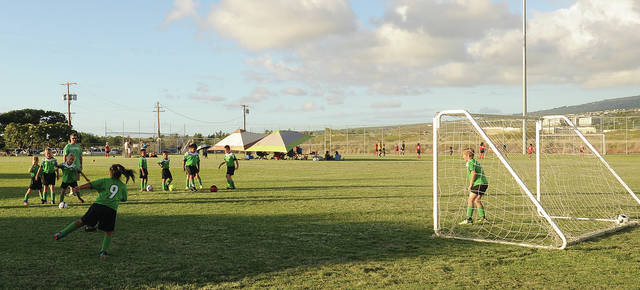
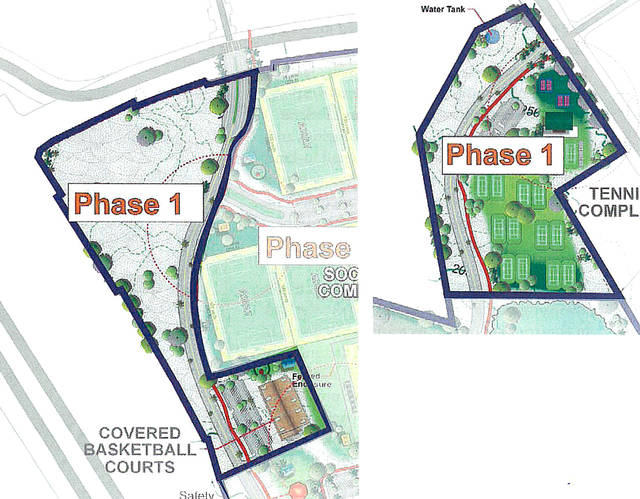


After 40 years maybe the council should just admit it is not really a good idea.
Lets put the money into Old Airport that is the park that is meant to be..
Tennis complex, who plays tennis these days?